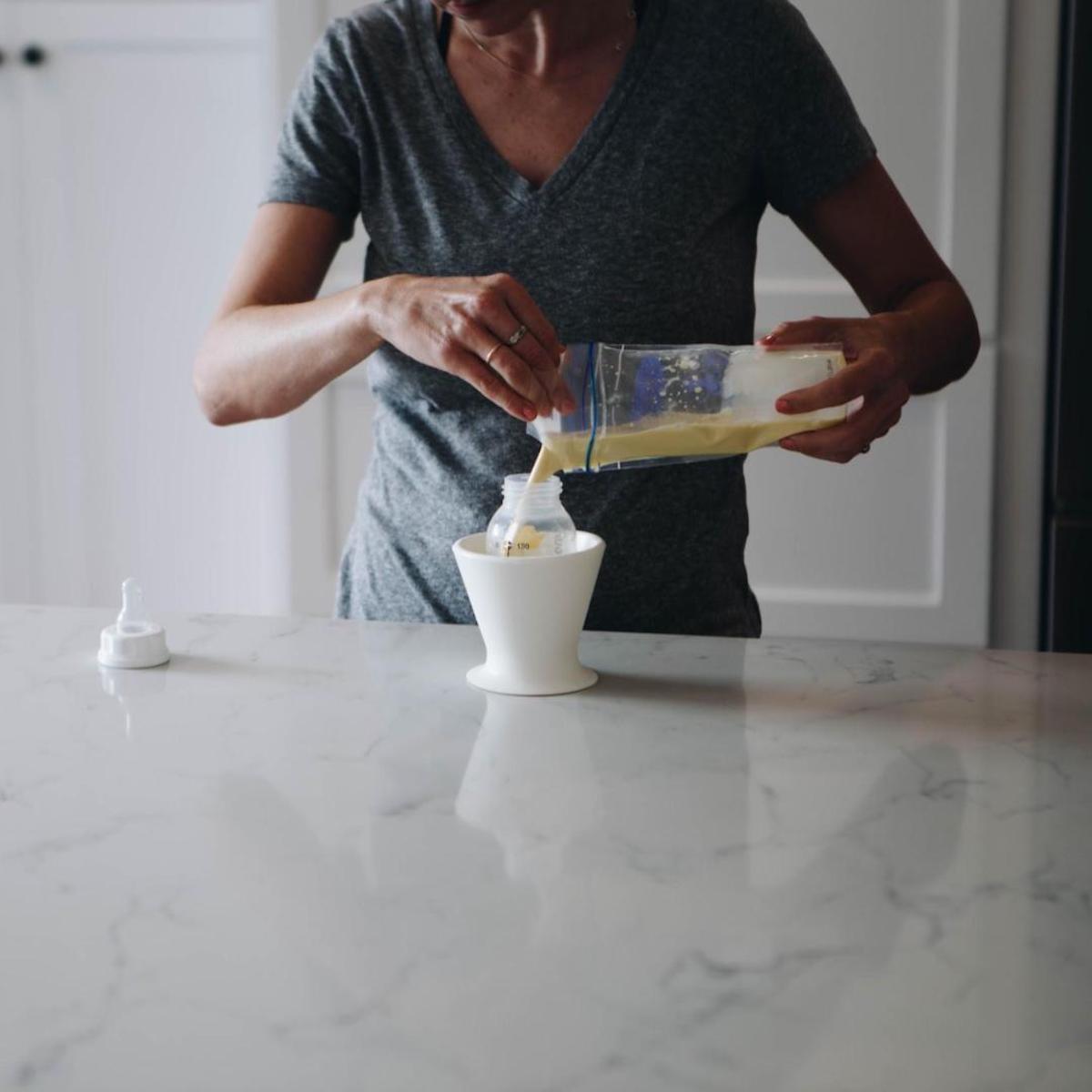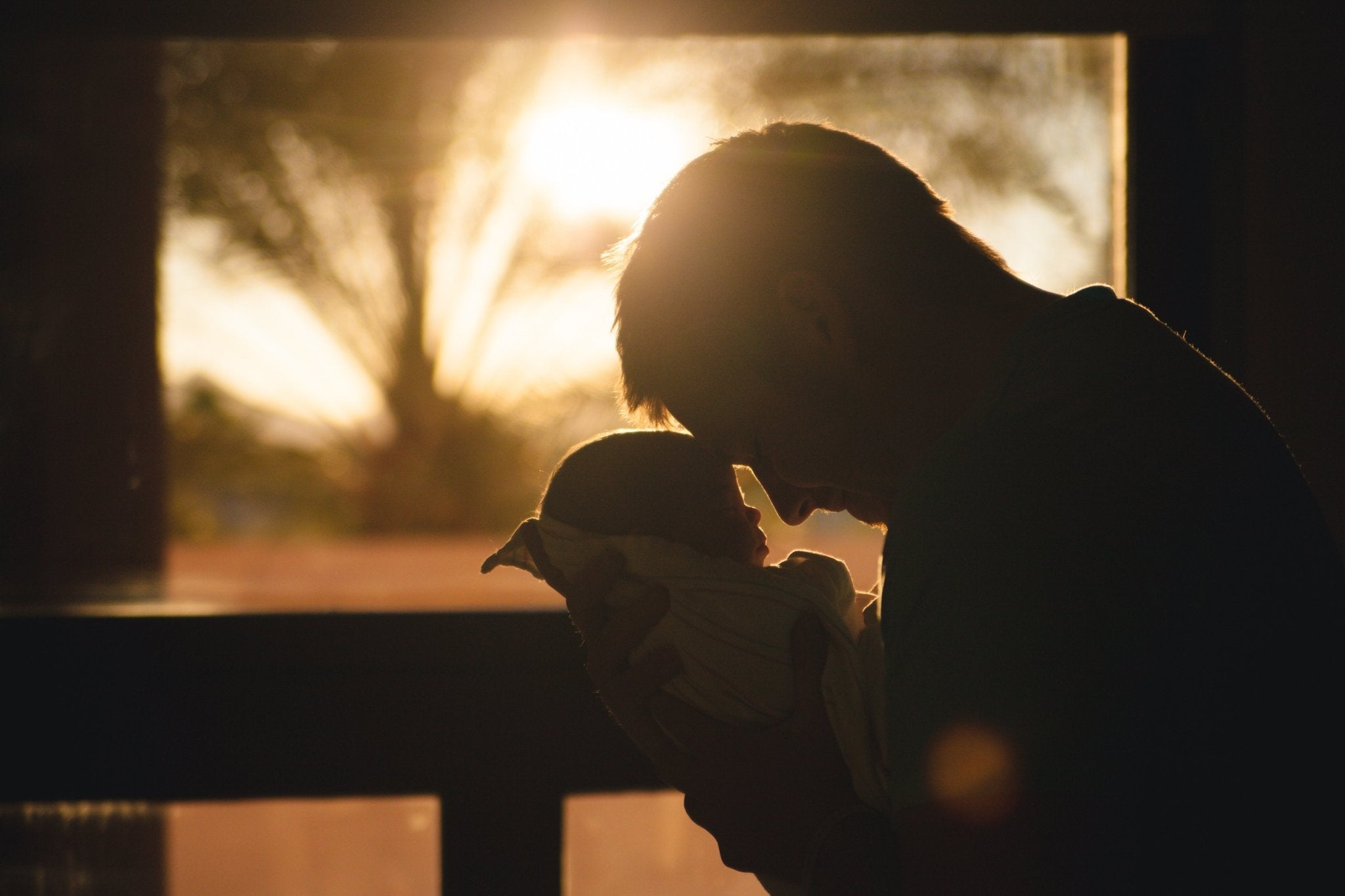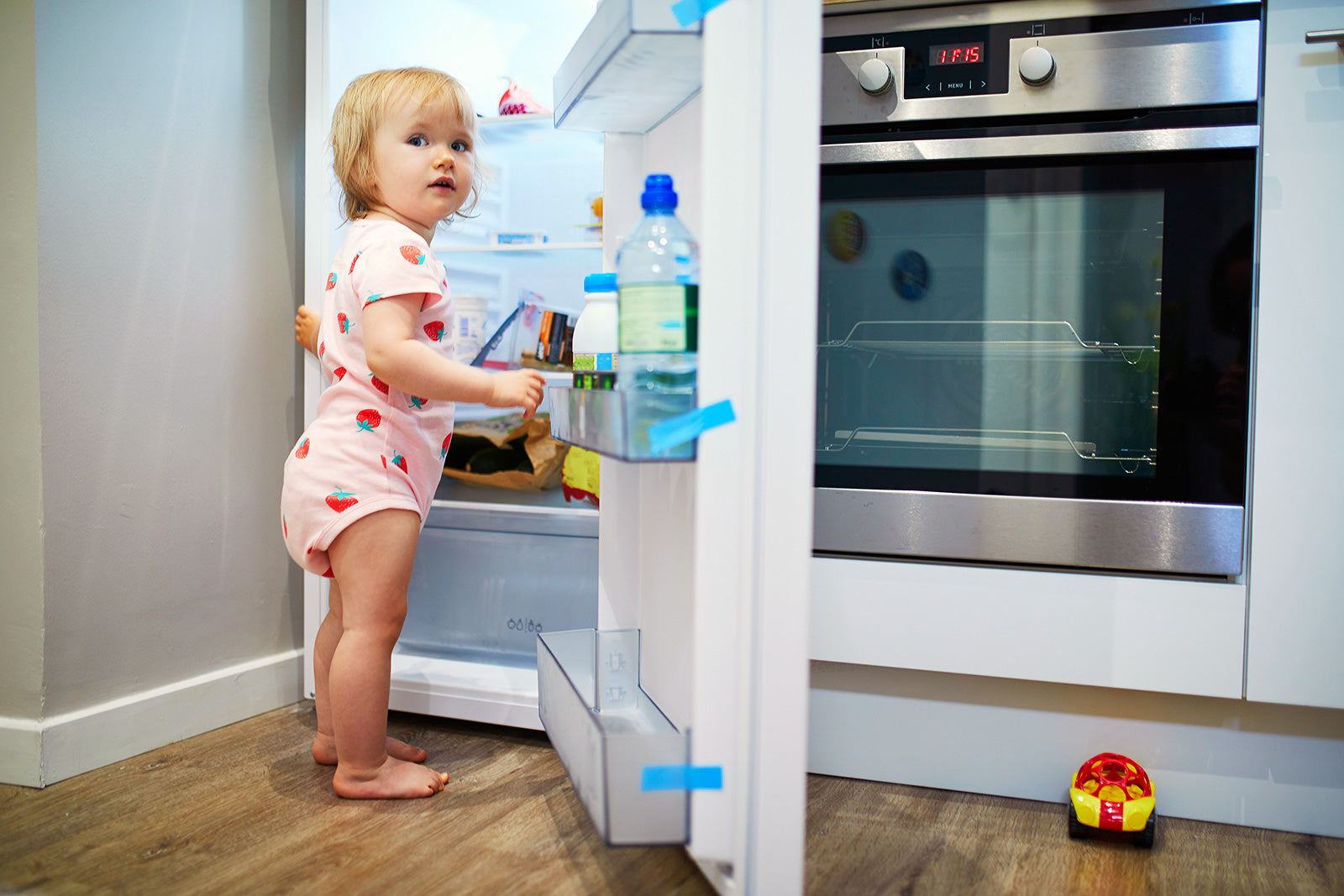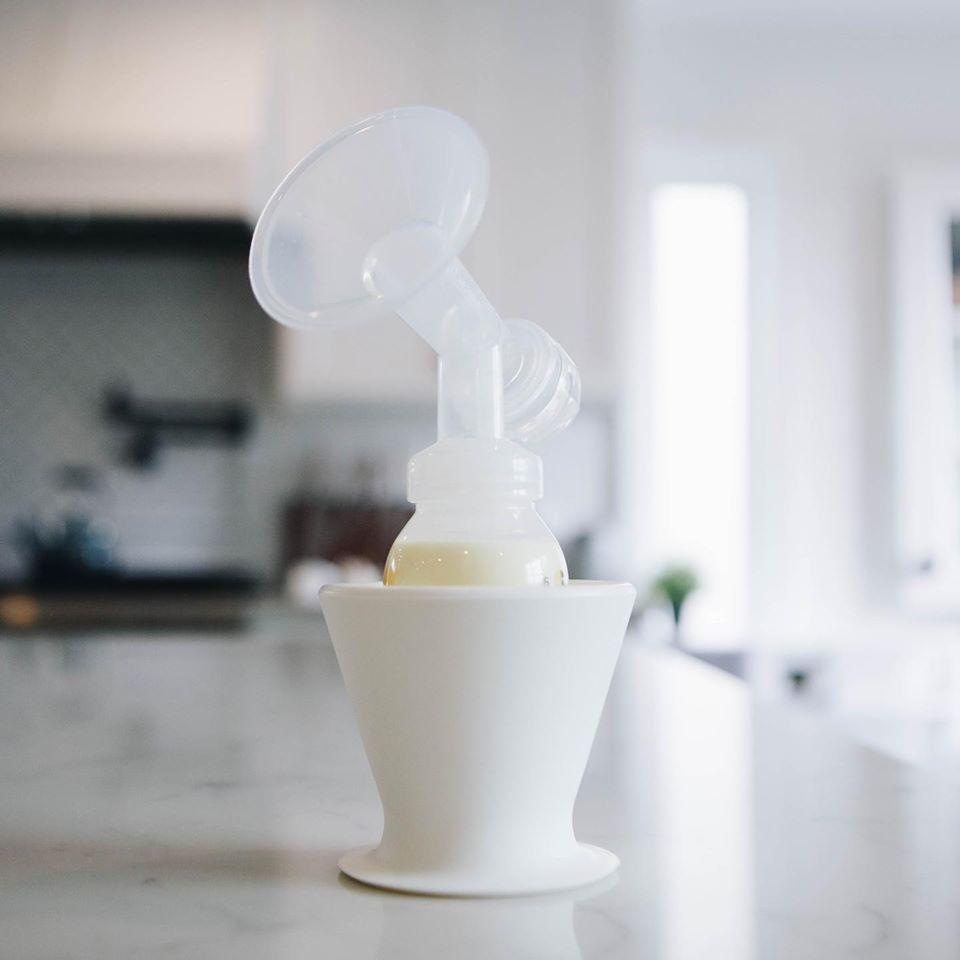How to Collect, Transfer, and Store Breast Milk Easily and Safely

Here we'll go over the logistics of exactly what to do with your liquid gold from start to finish. Collecting, transferring, and storing breast milk may not be the easiest process, but once you know what you're doing and have the right tools, it will make your days with your little one go much more smoothly.
Ways to Express and Collect Breast Milk
If you’re heading back to work away from your baby or just want to start a freezer stash of breastmilk for those times the two of you will be apart, you’ll have to start by collecting your milk. (And let me tell you, having a collection of breast milk is a wonderful sight to see!)
Though using an electric pump is usually the most widely used way to express breast milk, it’s not the only way. Having another option on hand is a great way to grow your stash without ever having to waste a single drop of precious breast milk.
You can express and collect breast milk using one of the following methods:
-
Single or Double Electric pump - this is usually the fastest way to express breast milk and will give you the most output. Used as a double, you can pump a full feeding to use later for your baby. As a single, you can choose to pump one side at a time or pump on the opposite breast from the one your baby is using to feed.
-
Manual breast pump - For those who breast pump occasionally, or need a reliable backup option, a manual breast pump is nice to have. It can be used on one breast at a time.
-
Hand Expression - This is usually the least efficient method for collecting breast milk, but sometimes it is necessary to relieve pressure or if you don’t have another method available.
-
Suction breast pump - The suction breast pump comes from Haakaa. This is the perfect way to catch extra milk that comes out of the opposite breast from which you’re feeding your baby. When you feed your baby, your milk lets down as your baby sucks on your breast. The problem is that your other breast lets down, too, and will just leak milk since your baby isn’t feeding off of that breast. The Haakaa simply suctions to your breast and will collect any milk that comes out while you’re breastfeeding.
- Milk “Catcher” - I so wish these were around when I was breastfeeding my littles! I hate to think about how much breast milk I wasted through the years just going about my day. These are shells that sit inside your bra and collect any milk that comes out of your breast throughout the day (or from your opposite breast when you are feeding your baby).
Once you’ve decided on your breast milk expression method, you’ll also need a way to collect the milk. You can choose between clean and sterile baby bottles or unused breast milk storage bags.
Some pumps have a way for you to pump directly into breastmilk storage bags, which can be convenient and allow you to skip the transfer step. Otherwise, you’ll pump directly into detachable bottles. If you are using a suction breast pump or milk catcher, you’ll need to transfer your breastmilk to a bag or bottle after collection.

Transferring Breast Milk
Transferring breast milk from one of your collection methods can be a sticky, icky mess if you’re not careful. Luckily we have some tips for you to make the process go as smoothly as possible without having to worry about losing a single drop of milk.
For each of the 3 transfer options we list below, we highly recommend using the bökee. This amazing bottle prep accessory allows you to make bottles one-handed while you have your baby in the other (or whatever else you might have in your other hand as a multi-tasking mama) It also gives your bottles a secure place to rest so you can avoid the dreaded tip over that leads to spilled milk everywhere.
How to transfer breastmilk from pump to storage bag:
A great hack if you need to pour your pumped milk from a bottle directly into a storage bag is to use your breast flange as a funnel. First, use the bökee to secure the bottle with flange attached. The bökee will hold the bottle tightly so you can unscrew the flange without worry that the bottle will tip. Then, with the storage bag in one hand, fit the flange into the bag and use your other hand to pour the milk from the bottle into the bag.
How to transfer breastmilk from bag to bottle:
Because breast milk storage bags are inexpensive space savers, they are a great way to store pumped breast milk. However, they are trickier to handle than bottles when it comes to the transfer process.
When you have a need to transfer breast milk from a bag to a bottle, the best way to avoid spillage is to secure the bottle inside of the bökee. Then, take two hands to carefully pour the milk into the bottle. (If scissors are handy, cutting the top off the bag first will make the process even more smooth.)
How to transfer breast milk from bottle to bottle:
Combining breast milk into one bottle is something you’ll find yourself doing quite often. Because a suction breast pump is like a bottle, also use this option if you’ll be expressing using a Haakaa.
Use the bökee to secure one of the bottles and then you can pour in the other bottle of breast milk with one hand. If you need to remove flanges before the transfer, the bökee also gives a secure place to hold the bottle while doing so.
Many moms wonder if they can transfer freshly expressed breastmilk to bottles that already have refrigerated or frozen breast milk in them. Luckily, the answer is yes! Just bring the pumped milk to room temperature first and then combine by pouring the fresh milk on top of the refrigerated or frozen milk using one of the transfer methods above.
Safe guidelines such as this one are important when it comes to storing your baby's breast milk.
Be sure to check out all the other ways the bökee can save you time in this post!
Safe Storage of Breast Milk
When it comes to safe storage of breast milk, there is a lot to get straight depending on where you plan to store it. Here are our top guidelines:
-
Store in a clean container designed for breast milk. This includes BPA-free plastic baby bottles, freezer-safe glass baby bottles or breast milk storage bags.
-
Store breast milk in the typical amount you would feed your baby. It’s better to store too little than too much. You can always thaw or heat up another bottle or bag for your baby if they’re still hungry, but you can’t refreeze thawed breast milk or reuse any unfinished milk your baby doesn’t drink. If you’re not sure how much milk you should storing in each bottle, this article from Kelly Mom has a useful calculator to help you determine the typical amount your baby would need at each feeding.
-
Move freshly expressed breast milk to the refrigerator or freezer within 4-5 hours. This is the amount of time that breast milk can safely stay out at room temperature.
-
Plan to have refrigerated breast milk on hand. Refrigerated milk is easier and faster to warm up. Refrigerated breast milk is best used within 4 - 5 days.
-
Utilize your freezer to create a stash of breast milk. Freezing breast milk allows you to store it for much longer. It can be frozen in a typical freezer for up to 9 months, and in a deep freezer for up to 12 months. However, keep in mind the point from the Mayo Clinic that your breast milk properties change over time to meet your baby’s needs: “Breast milk expressed when a baby is a newborn won't as completely meet the same baby's needs when he or she is a few months older.”
-
Thawed milk should be used within 24 hours. If you choose to thaw milk in the refrigerator before giving it to your baby, use within this recommended timeframe and don’t refreeze it.
- Not all stored breast milk will look exactly the same. Don’t be alarmed if one bag of breast milk differs from another. This article from Verywell Family gives a great overview of why breastmilk may vary in color.
Once you’re ready to feed your baby from your stored breast milk, you’ll need to utilize the transfer process once again. Along with prepping using the bokee, we also recommend using a bottle warmer that is safe for breast milk and can reliably warm your baby’s bottle to body temperature. Though the whole process of getting your baby the perfect bottle of breast milk may take a bit of practice at first, we're sure you'll have it down in no time.





